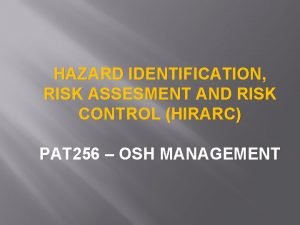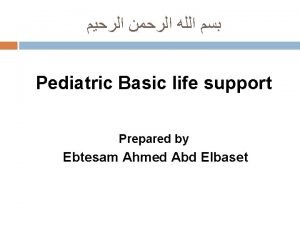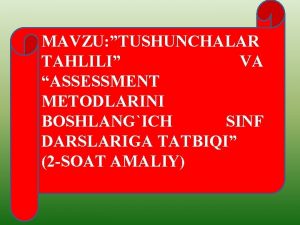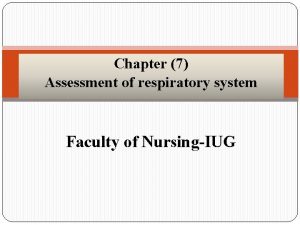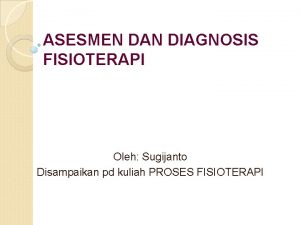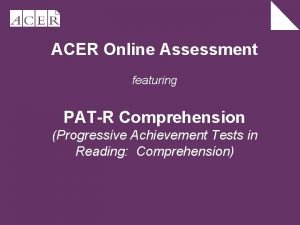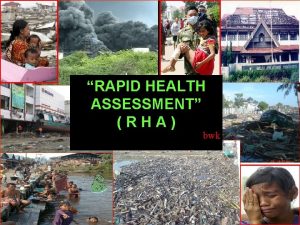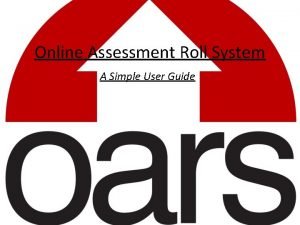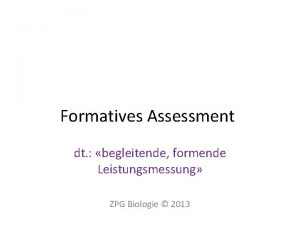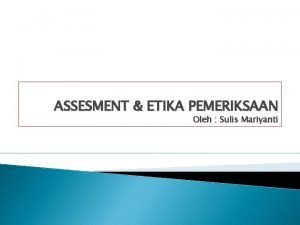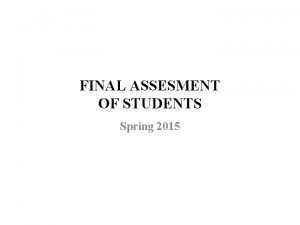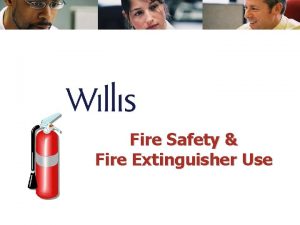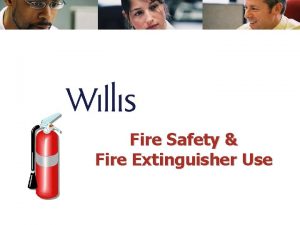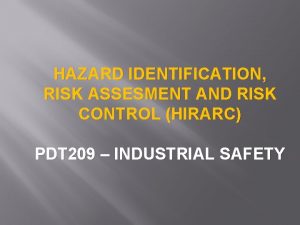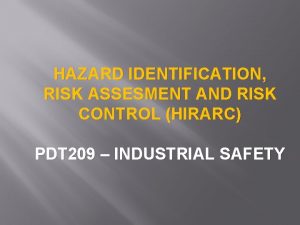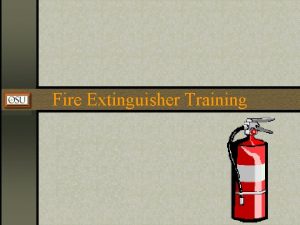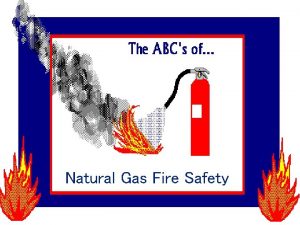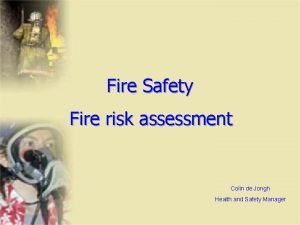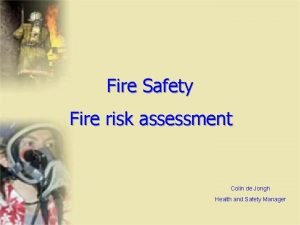FIRE SAFETY INTRODUCTION FIRE RISK ASSESMENT IN THE


















- Slides: 18


FIRE SAFETY

INTRODUCTION FIRE RISK ASSESMENT IN THE WORK PLACE

1. INTRODUCTION Occupational health and safety is a crossdisciplinary area concerned with protecting the safety, health and welfare of people engaged in work or employment. The goal of all occupational health and safety programs is to foster a safe work environment. It may also protect co-workers, family members, employees, customers, suppliers, nearby communities and other members of the public who are impacted by the workplace environment. • Occupational health and safety officers promote health and safety procedures in an organization. They recognize hazards and measure health and safety risks, set suitable safety control in place, and give recommendations on avoiding accidents to management and employees in an organization. The main task of OHS practitioners in many various countries are identifying safety and health hazards.

INTRODUCTION FIRE RISK ASSESMENT IN THE WORK PLACE

• FIRE RISK ASSESSMENT IN THE WORKPLACE A fire risk assessment is an organized and methodical look at the premises, the activities carried on these and thelikelihood that a fire could start and cause harm to those in and around the premises. It will help the employer to determine the chances of a fire starting and the dangers from fire that the premises present for the people who use them and any person in the immediate vicinity, and an important step in protecting the workers and his business in compliance with the law. The fire assessment method suggested in this lecture (guide) shares the same approach as that used in general health and safety legislation and can be carried out either as part of a more general risk assessment or as a separate exercise. The aims of the fire risk assessments are: To identify the fire hazards. To reduce the risk of those hazards causing harm to as low as reasonably practicable. To decide what physical fire precautions and management are necessary to ensure the safety of people in the premises if a fire does start.

• Fire risk assessment can be carried out following the five steps: Identify fire hazards ( Identify sources of ignition, Identify sources of fuel, Identify sources of oxygen) STEP 1.

• Fire risk assessment can be carried out following the five steps: Identify. STEP people 2. at risk

• Fire risk assessment can be carried out following the five steps: Evaluate, remove, reduce and protect from STEP 3. risk: (Evaluate the risk of fire occurring, Evaluate the risk to people: (Convection, Conduction, Radiation), Remove or reduce the hazards, Remove or reduce the risks to people).

• Remove or reduce the risks to people: (Fire-detection and warning systems, Firefighting equipment and facilities, Escape routes, Emerging escape lighting, Signs and notices, Installation, testing and maintenance).

• Remove or reduce the risks to people:

• Fire risk assessment can be carried out following the five steps: Record, plan, inform, instruct and train: Record significant findings and action taken, STEP 4.

• Record, plan, inform, instruct and train: Prepare the emergency plan,

• Record, plan, inform, instruct and train: Information, instruction and training.

• Fire risk assessment can be carried out following the five steps: Review: Keep assessment under review, Revise where necessary. STEP 5.

• How a water fire extinguisher works 1. A ring or pin on the handle stops the fire extinguisher from being set off by accident. It also acts as a tamperproof seal: if the ring is broken or missing, you know the extinguisher needs to be checked. 2. Inside the sturdy steel case, there's a canister containing high-pressure gas (orange with blue hashing). 3. Most of the extinguisher is filled with water (blue). 4. A tube runs right up the inside of the tube to a nozzle outside (gray). 5. The nozzle often ends in a piece of bendy plastic so you can easily direct it toward the base of a fire. 6. To operate the extinguisher, you pull the ring and press the handle. 7. Pressing the handle opens a valve (shown here as a green arrow) that releases the pressurized gas from the canister. 8. The gas immediately expands and fills the inside of the extinguisher, pushing the water downward • As the water is pushed down, it rises up the tube • 10. A jet of water emerges from the nozzle.


 How to do hirarc
How to do hirarc Ecological risk assesment
Ecological risk assesment Liquidity measures
Liquidity measures Fire hose reel signage standards
Fire hose reel signage standards Pat pediatric assessment
Pat pediatric assessment Brief lesson plan
Brief lesson plan Chaynvord
Chaynvord It assessment
It assessment Chapter 7 assesment
Chapter 7 assesment Icd frozen shoulder
Icd frozen shoulder Pat r test
Pat r test Essensial assesment
Essensial assesment Rapid health assesment
Rapid health assesment Informative assessments
Informative assessments Assessment roll
Assessment roll Assessment strategies and tools
Assessment strategies and tools Caf form
Caf form Tide idoe
Tide idoe Zpg biologie 2018
Zpg biologie 2018
